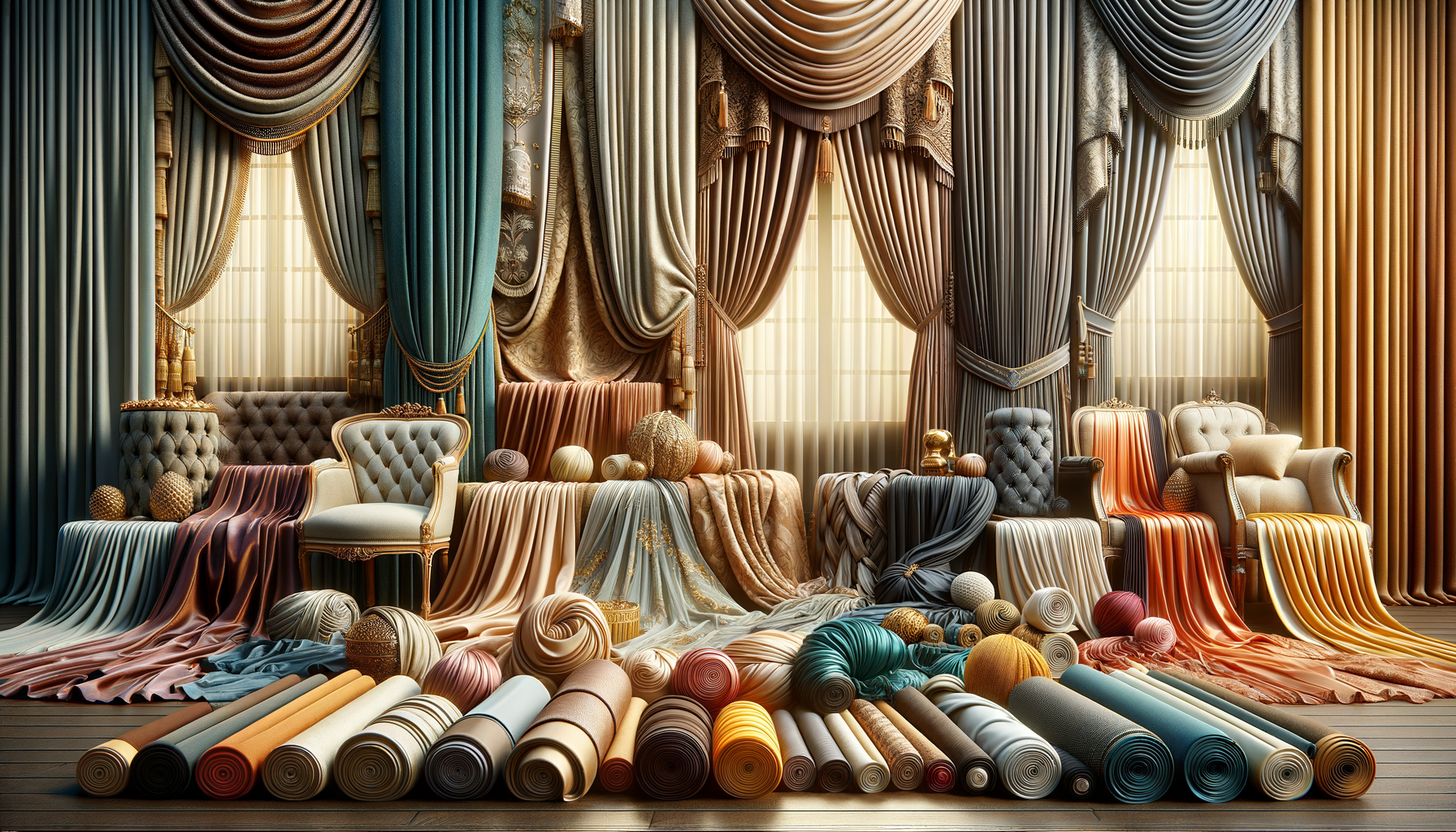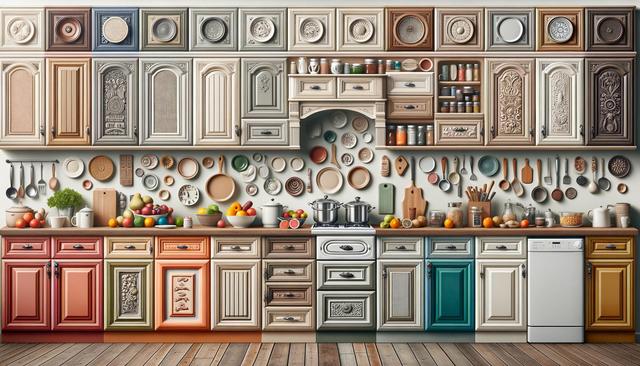The Versatility of Drapes and Curtains
Drapes and curtains are essential elements in home decor, offering both aesthetic appeal and practical benefits. Their versatility allows them to complement any room’s style, whether it’s a cozy bedroom, a formal dining area, or a modern living room. Drapes and curtains can transform a space, adding texture, color, and warmth.
One of the main advantages of drapes and curtains is their ability to control light and privacy. With a wide range of materials and thicknesses available, homeowners can choose options that allow for complete darkness or gentle light filtering. This adaptability makes them suitable for various settings, from bedrooms that require complete darkness for restful sleep to living rooms that benefit from natural light.
In addition to light control, drapes and curtains provide insulation, helping to maintain a room’s temperature. Thick, lined drapes can keep a room warm during the winter and cool during the summer, contributing to energy efficiency and reducing utility costs.
Moreover, drapes and curtains serve as noise reducers. Heavy fabrics can absorb sound, making them an excellent choice for rooms where noise reduction is desired. This feature is particularly beneficial in urban areas or homes located near busy streets.
Finally, drapes and curtains offer a cost-effective way to update a room’s decor. With countless colors, patterns, and styles available, they can be easily swapped to refresh a space without the need for a complete redesign.
Choosing the Right Fabric
When selecting drapes and curtains, fabric choice plays a crucial role in both functionality and appearance. Each fabric type offers distinct qualities, making it important to consider the specific needs of each room.
Lightweight fabrics such as cotton and linen are popular for their airy feel and ability to let in natural light. These materials are ideal for spaces where a bright, open atmosphere is desired, like kitchens and sunrooms. They are also easy to clean, making them a practical choice for high-traffic areas.
On the other hand, heavier fabrics like velvet and brocade provide a more formal and luxurious appearance. These materials are excellent for rooms that require added insulation and privacy, such as bedrooms and formal dining rooms. Their weight and texture add a sense of opulence and grandeur to any space.
Silk is another luxurious fabric option, known for its elegant sheen and smooth texture. While it offers a sophisticated look, silk requires careful maintenance and is best suited for low-traffic areas or rooms where it won’t be exposed to direct sunlight, which can cause fading.
For those seeking durability and ease of care, synthetic fabrics like polyester are a practical choice. They are resistant to wrinkles and fading, making them suitable for busy households. Additionally, many synthetic fabrics are treated to resist stains, enhancing their longevity.
Ultimately, the choice of fabric should align with the room’s function, desired aesthetic, and maintenance preferences. By considering these factors, homeowners can select drapes and curtains that enhance their living spaces while meeting their practical needs.
Color and Pattern Selection
Color and pattern are pivotal in determining the overall impact of drapes and curtains on a room’s decor. The right choice can harmonize with existing elements or serve as a bold statement piece.
Neutral colors like white, beige, and gray are timeless and versatile, blending seamlessly with various color schemes. They provide a clean, understated backdrop that allows other design elements to shine. Neutral drapes are particularly effective in minimalist or contemporary spaces, where simplicity and elegance are key.
For those looking to add a pop of color, vibrant drapes can inject energy and personality into a room. Bold colors like deep blue, emerald green, or rich burgundy can create a focal point, drawing the eye and adding depth. These colors work well in spaces where a dramatic effect is desired, such as a living room or dining area.
Patterns offer another dimension of visual interest. Geometric designs, floral motifs, and abstract prints can all contribute to a room’s character. When selecting patterns, it’s important to consider scale; large patterns can dominate a space, while small patterns offer subtle texture.
Stripes and plaids bring a classic touch, often associated with traditional or rustic decor. These patterns can add structure and order to a room, making them suitable for spaces where a sense of balance is desired.
Ultimately, the choice of color and pattern should reflect personal style and complement the room’s existing decor. By carefully considering these elements, homeowners can create a cohesive and inviting atmosphere.
Measuring and Installation Tips
Accurate measurements and proper installation are crucial for achieving the desired look and functionality of drapes and curtains. Incorrect sizing or installation can lead to unsightly gaps, poor light control, and an overall unpolished appearance.
When measuring for drapes, it’s important to consider both width and length. For width, measure the window and add extra inches on each side to ensure full coverage and a gathered look when the curtains are closed. This additional width also prevents light from seeping in around the edges.
Length is another critical factor. Floor-length drapes create a formal, elegant look, while shorter lengths can offer a more casual feel. To achieve floor-length drapes, measure from the rod to the floor, allowing for any desired pooling or clearance. If opting for a shorter length, measure to the desired endpoint, such as the window sill or just below the window frame.
Installation begins with selecting the appropriate hardware. Curtain rods should be sturdy enough to support the weight of the drapes and extend beyond the window frame to accommodate the full width. Consider the style of rod, as it contributes to the overall decor. Options range from simple metal rods to decorative finials that add a touch of elegance.
When installing, ensure the rod is level and securely mounted to prevent sagging. Use anchors or wall studs for added stability, especially with heavy drapes. Properly hung drapes should move smoothly along the rod, allowing for easy opening and closing.
For those who prefer a no-fuss option, consider using tension rods or clip rings, which offer simple installation without the need for drilling. These solutions are ideal for renters or those seeking a temporary update.
By following these measuring and installation tips, homeowners can ensure their drapes and curtains not only look beautiful but also function effectively.
Maintaining Your Drapes and Curtains
Proper maintenance is essential to keep drapes and curtains looking their best and prolong their lifespan. Regular cleaning and care can prevent dust buildup, fading, and damage, ensuring that they continue to enhance your home’s decor.
Dusting and vacuuming are simple yet effective ways to maintain drapes. Use a vacuum with a brush attachment to gently remove dust and debris from the fabric. This routine should be done weekly to prevent dust accumulation, which can lead to discoloration over time.
For deeper cleaning, check the care label for specific instructions. Many fabrics can be machine washed on a gentle cycle, while others may require dry cleaning. It’s important to adhere to these guidelines to avoid damaging the fabric or causing shrinkage.
Sun exposure can lead to fading, especially in rooms with large windows or direct sunlight. To minimize this effect, consider using window treatments like blinds or shades in conjunction with drapes. This combination provides added protection and extends the life of the fabric.
For stains, prompt treatment is key. Blot the stain gently with a clean cloth and use a mild detergent or stain remover suitable for the fabric type. Avoid rubbing, as this can push the stain deeper into the fibers.
Rotating drapes periodically can also help distribute wear evenly, preventing one side from fading more than the other. This is particularly important for rooms where drapes are frequently opened and closed.
By incorporating these maintenance practices, homeowners can keep their drapes and curtains looking fresh and vibrant, ensuring they remain a beautiful and functional part of their home decor.


